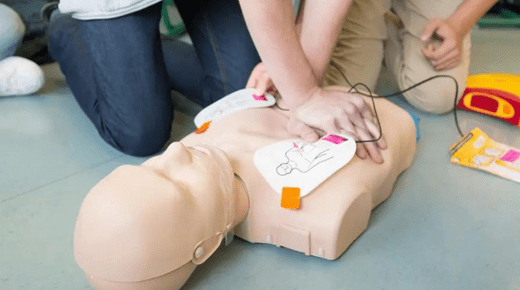Introduction to Basic Life Support (BLS) Instructor Course
The Basic Life Support (BLS) Instructor Course is designed for individuals who wish to teach BLS techniques to others. It equips participants with the knowledge, skills, and credentials necessary to become certified BLS instructors.
Course Overview
The BLS Instructor Course covers instructional methods, adult learning principles, and effective teaching strategies specific to BLS content. Participants learn how to conduct BLS classes, facilitate skill sessions, and evaluate student performance.
Prerequisites
Before enrolling in the BLS Instructor Course, candidates must possess current BLS certification and demonstrate proficiency in BLS skills. Some organizations may also require candidates to complete a pre-course assessment or submit a letter of recommendation.
Curriculum Content
The curriculum includes topics such as BLS guidelines and protocols, CPR techniques, AED operation, choking relief, and team dynamics in cardiac emergencies. Participants gain in-depth knowledge of BLS procedures and best practices.
Instructional Techniques
Participants learn effective instructional techniques, including lecture delivery, demonstration of skills, hands-on practice, and interactive learning activities. Emphasis is placed on engaging students, promoting active participation, and adapting instruction to diverse learner needs.
Classroom Management
BLS instructors learn how to manage classroom dynamics, facilitate group discussions, and address questions or concerns from students. They also develop strategies for maintaining a safe and supportive learning environment.
Skill Session Facilitation
Instructors practice facilitating skill sessions for CPR, AED use, and choking relief, providing constructive feedback to students and guiding them through hands-on practice scenarios. They learn how to assess student performance and provide remediation as needed.
Assessment and Evaluation
The course covers methods for assessing student competency in BLS skills, including written exams, practical skills evaluations, and scenario-based assessments. Instructors learn how to objectively evaluate student performance and provide constructive feedback.
Ethical Considerations
Ethical considerations in BLS instruction, such as upholding professional standards, respecting student confidentiality, and ensuring patient safety, are emphasized throughout the course.
Certification Process
Upon successful completion of the BLS Instructor Course, participants receive certification as BLS instructors. Certification may be valid for a specified period, typically two years, and requires renewal through continuing education and demonstration of ongoing competency.
Professional Development Opportunities
BLS instructors have opportunities for professional development, such as attending instructor update courses, participating in mentorship programs, and pursuing advanced certifications in related areas of healthcare education.
Teaching Opportunities
Becoming a BLS instructor opens doors to teaching opportunities in various settings, including healthcare institutions, community organizations, schools, and workplace training programs. Instructors play a vital role in preparing individuals to respond effectively to cardiac emergencies.
Community Impact
By teaching BLS skills to others, instructors contribute to building a safer and more prepared community. Their efforts empower individuals to take action in cardiac emergencies and potentially save lives.
Continuing Education Requirements
Instructors must stay current with updates to BLS guidelines and protocols by participating in continuing education activities and maintaining their own BLS certification. This ensures that they deliver accurate and up-to-date instruction to their students.
Commitment to Excellence
BLS instructors are committed to excellence in teaching and promoting BLS knowledge and skills. They serve as role models and advocates for cardiac arrest awareness and preparedness within their communities.
Conclusion: Embarking on the BLS Instructor Journey
In conclusion, the Basic Life Support (BLS) Instructor Course offers a pathway for individuals to become certified BLS instructors and make a meaningful impact in healthcare education. By completing the course and embracing the role of instructor, participants play a vital role in training others to respond effectively to cardiac emergencies and ultimately save lives.




